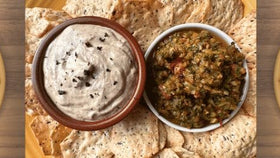Is Tahitian Vanilla Good for Baking?
The answer to the question of whether or not Tahitian Vanilla is good for baking is a simple and enthusiastic, “absolutely”! That said, before we really dig into whether or not Tahitian Vanilla Beans are better for baking than Planifolia varieties of beans from many regions around the world—including Papua New Guinea, Madagascar, Uganda, Mexico, and beyond—we need to first look at how the flavor and aroma properties of these beans differ. With no two baking projects being exactly the same, it only makes sense that the type of bean preferred for each application would likely differ as well.
Shop Our Gourmet Grade-A & Grade-B Vanilla Beans
How Do Tahitensis Vanilla Beans Differ From Planifolia Vanilla Beans
Tahitian Vanilla Beans possess a floral aroma.
Tahitian vanilla is notorious for having an intoxicating floral aroma, which also transcends through the nasal passage and lingers on the tongue.
Tahitian Vanilla Beans are practically bursting with vanilla caviar.
Unlike Planifolia pods, Tahitian vanilla beans are so full of vanilla seeds that you won’t even need to cut into the bean to release them. Simply run the back of your knives down the length of the beans and the vanilla caviar will pipe out of the end.
Tahitian Vanilla Tastes Like Stone Fruit and Edible Flowers.
When describing the more common Planifolia varieties of vanilla beans, adjectives such as creamy, rich, chocolatey, and nutty are often used. Oftentimes, folks will mention notes of oak, butter, and even dried fruits. Tahitian vanilla, on the other hand, is far more delicate, with flavors reminiscent of stone fruits like peaches, nectarines, and plums and edible flowers like lilacs or violets.
Baking Applications for Tahitian Vanilla Beans
Use Tahitian Vanilla to Enhance Fruit-Forward Desserts.
The floral notes in Tahitensis varieties of vanilla position it perfectly for balancing fruit desserts. Tahitian vanilla has a way of tricking your brain into thinking it is consuming something sweet, so rather than adding more sugar to offset the tanginess from the fruit, use the seeds from a quality Tahitian vanilla bean.
Use Tahitian Vanilla in Pastries.
Pastry chefs worldwide seek out high-quality Tahitian Vanilla Beans for use in a wide variety of baking applications, whether that be danishes, pies, doughnuts, croissants, cakes, cookies, or wide variety of other baked goods. Planifolia is the more classic and expected vanilla tone; so chefs who really want to add a bit of exotic flare to their creations often choose Tahitensis. That’s not to say it is always the best option for baked goods, but it is certainly something to consider.
Use Tahitian Vanilla in Custards.
Tahitian vanilla beans need not be reserved for fruit desserts and pastries. The less conventional vanilla really stands out in creamy custards like flan, ice cream, or even bread pudding.
Use Tahitian Vanilla Beans for Aesthetic Appeal.
Because of the high concentration of seeds in Tahitian vanilla beans, they are perfect for imparting those tiny black specks into dishes for aesthetic appeal.
*****







Slofoodgroup
Author